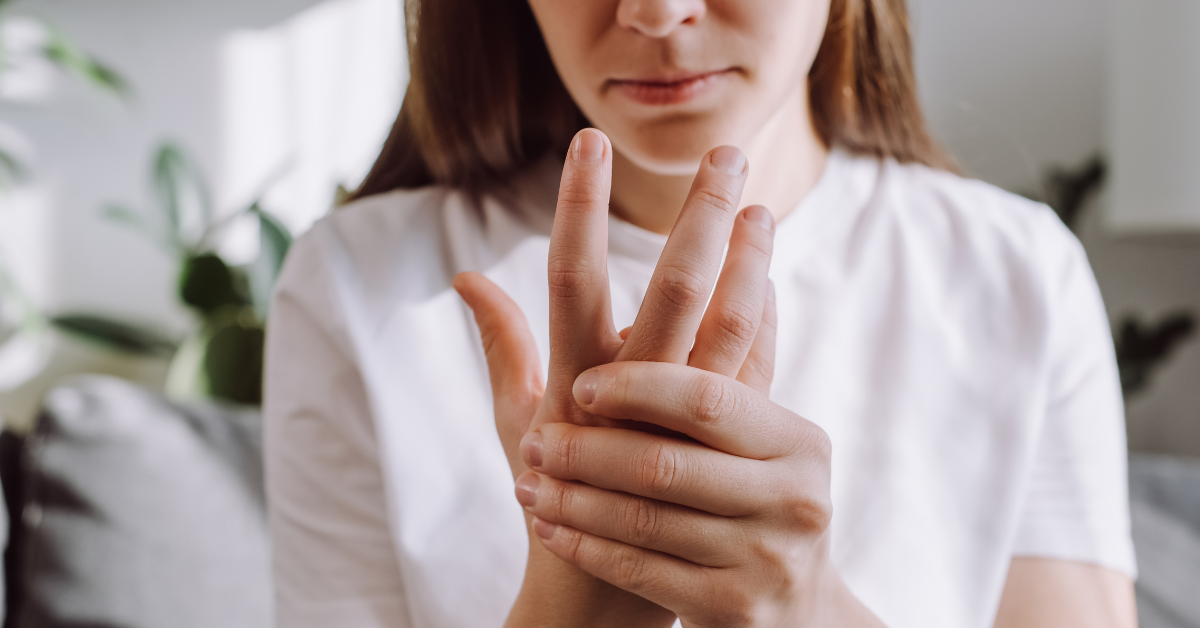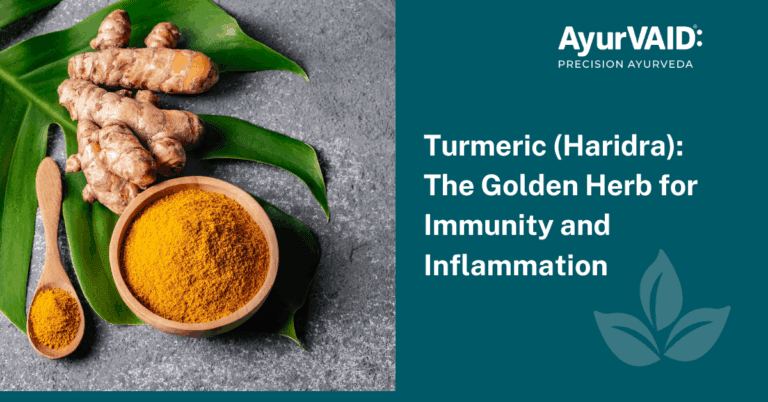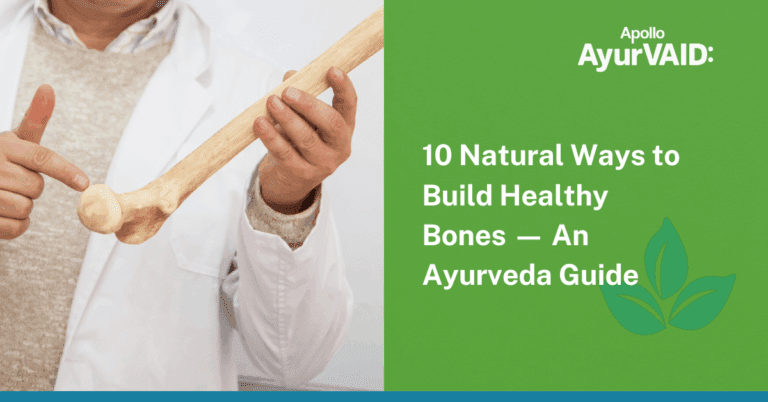
Web Stories
Step Into the Story: Explore Now
Introduction
Living with Rheumatoid Arthritis can be very challenging for the patient as it affects the joints and overall quality of life. Although there are many treatment options available, most people opt for Ayurvedic Treatment for Rheumatoid Arthritis to tackle the problem comprehensively.
Ayurveda considers RA as “Amavata”, where ‘Ama’ indicates metabolic toxin and ‘Vata’ implies Dosha, whose disturbance is crucial in the disease manifestation.
Ayurveda medicine prioritizes root cause management over mere signs and symptoms. Hence, various Pachakarma therapies, internal medicines, dietary modifications, and lifestyle alterations, restore the balance of the body’s innate healing systems. Though many people look for a Permanent Cure for Rheumatoid Arthritis in Ayurveda, treatment success depends on factors like disease stage and overall health.
This blog discusses how Ayurveda for Rheumatoid Arthritis manages the condition effectively through therapeutics and lifestyle changes to prevent disease progression and improve quality of life.

Ayurveda for Rheumatoid Arthritis
A Permanent Cure for Rheumatoid Arthritis in Ayurveda is possible for those in the earlystages of RA without multiple health complications. Panchakarma procedures can potentially arrest disease progression and prevent future flare-ups. However, in advanced stages where joint deformity has occurred,Ayurveda interventions focus on providing symptomatic relief and improving the quality of life.
Amavata is a complex illness whose etiopathology involves Mandagni (impaired digestive fire) causing Ama (metabolic toxin) formation. This Ama, when associated with the imbalanced Vata and Kapha dosha, brings about Dosha-Dushya (imbalance of joint tissues due to imbalanced doshas) combination leading to the symptoms of Amavata. The objective of the treatment is to normalize the vitiated Vata and Kapha dosha by reducing Ama through Deepana (improving digestive fire) and Amapachana (improving metabolism).
Ayurvedic Treatment for Rheumatoid Arthritis
The Ayurveda prognosis of Amavata is categorized into four types: Sukha Sadhya (easily manageable), Krichra Sadhya (difficult but manageable), Yapya (maintainable), and Asadhya (poor prognosis). The prognosis depends on joint involvement, extra-articular symptoms, and functional impairment.
Treatment response is determined by the success of Shamana therapy (Internal medicine and other Palliative care), tolerance to Panchakarma, sustained relief, and. Other diagnostic tools and clinical findings are used for prognosis.
Prognosis depends on factors such as disease duration, patient health, severity, and response to treatment. Sukha Sadhya means the disease is in the early stages, involving only one joint, no complications, and good immunity . results are better if treatment is started early. Moderate results can be achieved with proper treatment within 1-2 years of manifestation, However, if a patient follows the treatment, modifies his diet and lifestyle, and has resilience, best results can be achieved.
Ayurveda Treatment Approach for RA - How It Works
The treatment principle of Amavata is mentioned in classical texts of Ayurveda as
लङ्घनं स्वेदनं तिक्तं दीपनानि कटूनि च ।
विरेचनं स्नेहपानं बस्तयश्चाममारुते ||
सैन्धवाद्येनानुवास्य क्षारवस्तिः प्रशस्यते ॥ १ ॥ (Chakradutta)
Langhana, Swedana, Deepana, Virechana, Snehapana, Vasti are the major therapies administered. Lets explore each modalities –
- Langhana: Therapeutic fasting as first-line management of Rheumatoid Arthritis is a measure that seeks to decrease the concentration of ama (metabolic toxins) in the body. An improvement in digestion and metabolism allows the proper breakdown of Ama. The duration will depend on the patient’s strength and disease severity. Autophagy, a cleaning mechanism of the cell body that breaks down damaged components of cells to mitigate harm and inflammation, is triggered by fasting. It also improves gut microbiome health which is linked with the severity of RA.
- Snehapana: medicated ghee enriched with herbs that have a bitter and pungent taste when administered in graduated doses , helping to pacify Vata and Kapha. Medicated ghee contains fatty acids that decrease the inflammation within the joints.
- Swedana: Fomentation therapy is given to liquefy and eliminate Ama from the body with sweating. It includes therapies such as Bhaspa Sweda, Churna Pinda Sweda, Upanaha, Patra Pinda Sweda, Valuka Sweda, or Salvana Sweda. The treatment decreases joint stiffness and pain. It enhances blood circulation, reduces inflammation, enhances lymphatic drainage, relaxes the muscles alleviates stiffness, and increases the production of synovial fluid that lubricates and makes the joints more flexible.
- Virechana: One of the most important Panchakarma procedures that removes excess Dosha and Ama from the body through controlled purgation. The therapy helps remove pro-inflammatory compounds through the gut, reduces gut permeability associated with autoimmune conditions, improves gut microbiota to lower systemic inflammation, and supports the removal of inflammatory mediators (such as C-reactive protein (CRP) and erythrocyte sedimentation rate (ESR)) via the liver and bile system.
Before Virechana, the patient is prepared with Snehana and Swedana to achieve maximum results.
- Vasti: A procedure where medicated oil or decoction is administered through the rectal route. It offers comfort to Vata Dosha primarily the reason for joint pain and stiffness. Based on Dosha dominance Tikshna Kshara Vasti or Alkaline Enema, Vaitarana Vasti, and Saindhavadi Anuvasana Vasti are prescribed. Vasti delivers the anti-inflammatory factors straight to the large intestine affecting the enteric nervous system, enhancing the absorption of lipid-soluble nutrients, and restoring balance in the gut microbiome. Tikshara Vasti has an alkaline nature which neutralizes inflammatory environments, increases absorption of essential minerals for strong bone and healthy joints, and helps regulate PH balance in Synovial fluids.
- The internal medicines with Tikta and Katu Rasa (Bitter and Pungent Taste) are prescribed to enhance digestion, remove Ama, reduce inflammation, and balance Vata and Kapha Doshas. Bitters and pungent herbs have potent compounds that inhibit inflammatory pathways and modulate the T-cell responses of autoimmune reactions; they can even hinder some pro-inflammatory enzymes.
The sequence of treatment is usually followed in the order mentioned for maximum effectiveness:
- First, Ama is reduced by Langhana, while systemic inflammation also reduces.
- Swedana is applied to mobilize toxins, improving circulation to affected joints.
- Virechana follows, enhancing the removal of inflammatory mediators.
- Vasti treatments balance Vata and treat other underlying gastrointestinal factors that may contribute to RA while also supporting tissue repair and regeneration.
- Long-term management continues with internal medicines to modulate immune responses.

Conclusion
The Ayurveda Approach to Amavata (Rheumatoid Arthritis) is an integrated systematic treatment method that emphasizes resolving inflammation, detoxifying metabolic toxins, and re-establishing a balanced life. This is achieved through therapeutic fasting, Panchakarma procedures, and herbal medicines. Treatment efficacy in Ayurveda highly depends on the disease stage, patient’s condition, and timely intervention. Early-stage patients benefit greatly, while advanced conditions may also be relieved by Ayurveda as it improves the quality of life along with symptomatic management. The Ayurveda approach also restores digestive health, immune function, and overall body constitution, thus providing a sustainable framework for long-term disease control and better well-being.
References
- Gulve, K., Kuchewar, V, & Shinde, S, (2022). Management of amavata (Rheumatoid arthritis) using Ayurveda standard treatment protocol: A case report. International Journal of Ayurvedic Medicine, 13(2), 561–565. https://doi.org/10.47552/
ijam.v13i2.2715 - Longo VD, Mattson MP. Fasting: molecular mechanisms and clinical applications. Cell Metab. 2014 Feb 4;19(2):181-92. doi: 10.1016/j.cmet.2013.12.008. Epub 2014 Jan 16. PMID: 24440038; PMCID: PMC3946160.
- Kritika, Niranjan Rao, Padmakiran C. Intervention of Amavata w.s.r. to Rheumatoid Arthritis through Ayurveda: A Single Case Study. J Ayurveda Integr Med Sci 2023;07:229-234. http://dx.doi.org/10.21760/
jaims.8.7.44 - Zaiss MM, Joyce Wu HJ, Mauro D, Schett G, Ciccia F. The gut-joint axis in rheumatoid arthritis. Nat Rev Rheumatol. 2021 Apr;17(4):224-237. doi: 10.1038/s41584-021-00585-3. Epub 2021 Mar 5. PMID: 33674813.
- Guo W, Lv G, Yang D, Zhang W, Li N, Hu J, Wu Y, Pi Z, Lin Z. Advances in the effect of gut-joint axis dysfunction on rheumatoid arthritis and the intervention of natural products. Chin J Anal Chem. 2024 Jan;52(1):100354. doi:https://doi.org/10.1016/j
.cjac.2023.100354






